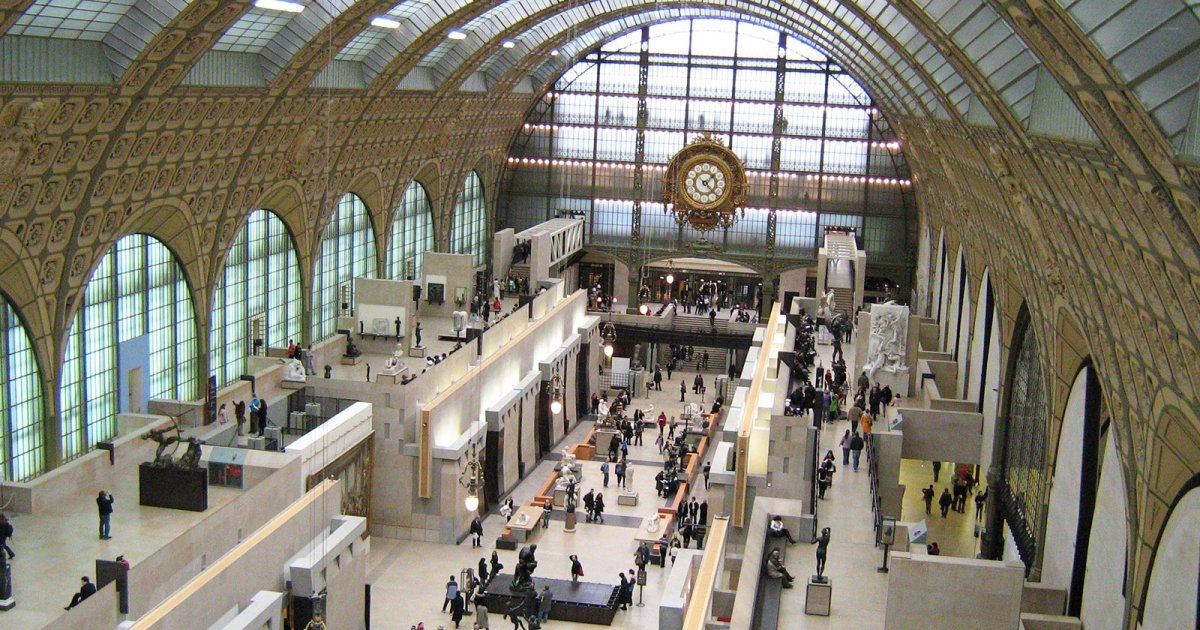MUSEE ORSAY, Museum Itinerary
 Language: English / USA
Language: English / USA
The museum's itinerary passes through three main levels: the ground floor that runs along a central corridor, the terraced mezzanine floor, and the upper level that runs above the lobby with its train tracks.
As soon as you enter you'll be in front of a large hallway full of sculptures, with several side halls facing it. I suggest following the progressive numbering, starting from the first on the right. By proceeding chronologically, you'll start with the main artistic forms that marked the period between 1848 and 1870. From the painter Eugène Delacroix you move on to realism, exemplified perfectly here with the paintings by Courbet and Millet and the works by engraver and sculptor Honoré Daumier, whose painted-clay busts will amuse you for the wit with which he "distorted" the traits of some politicians of his time.
Your itinerary continues with the landscape painters of the "Barbizon School", and with impressionist paintings made before the movement's "official" start in 1874.
To continue in chronological order, go to the top level and immerse yourself in the impressionist universe: this museum has the most complete impressionist art collection in the world. Close to three and a half million annual visitors come to this museum, and especially to this section; Orsay is second only to the Louvre in Paris for number of visitors.
Then you go down to the mezzanine level dedicated to the post-impressionist generation, where you can admire works by Van Gogh, Gauguin, Paul Signac, and Georges Seurat. An entire section is full of sculptures by Rodin, the great master of the nineteenth century that's famous for his statue of the Thinker. In the other rooms, you'll find yourself in full "Belle Epoque" with vases, chairs, furniture, glass, and mosaics of the so-called "floral style", which was extremely successful in Paris between the 1800s and the 1900s. I'd especially like to point out the Charpentier Dining Room and its poplar, mahogany, and oak furniture.
If you want to get a glimpse of some of the building's original function, look at the large glass case sheltering the tracks, which gives the area a special, diffuse brightness thanks to the use of light limestone. Don't miss the huge clock that dominates the museum from above in its sumptuous bronze setting, which has become symbolic of the building's railway heritage.
FUN FACT: here at Orsay you can also see what is probably the most scandalous painting ever made, called "Origine du monde" by Gustave Courbet. Its previous owner was the psychoanalyst Jacques Lacan, who however kept the painting hidden under another frame!



